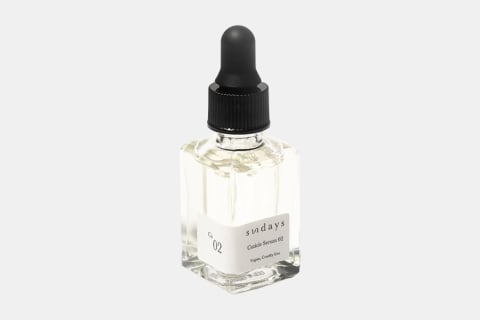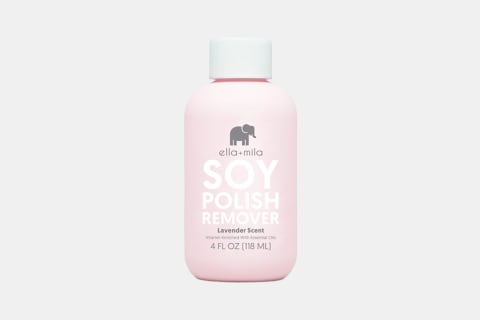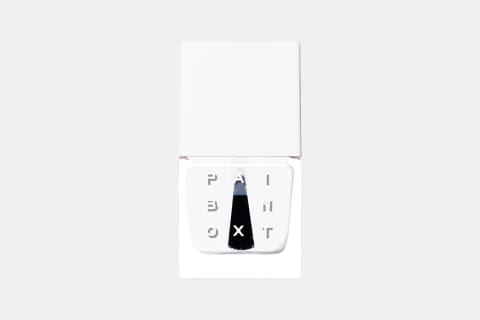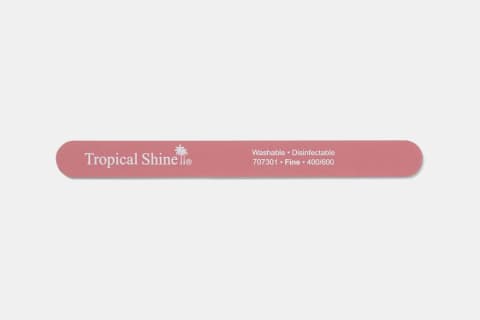Sure, your nails might not feel dry, or brittle, but that doesn’t mean you’re completely off the hook. You wouldn’t shrug off your daily skin care routine just because you don’t see any blemishes or areas of concern, would you? Same goes for nail care: The best offense, after all, is a good defense. Add a cuticle oil to your daily routine: Many options include fatty acids and vitamins that nourish the nails and fill in any micro-cracks in the skin. While using the dropper daily is enough to keep nails healthy, chief educator of Paintbox Evelyn Lim says you can use a cuticle oil up to three times a day if your tips are feeling especially dehydrated (from, say, over-sanitizing). “Apply cuticle oil at breakfast, lunch, and dinner. Why not?” Specifically, your nails consist of keratin, so it’s important to make sure you’re getting your fill of keratin-building amino acids. Two of the most popular (and widely studied) are biotin and collagen, as they tend to be the most effective in supporting nail health.* In terms of collagen, another study showed that when patients took collagen daily for 24 weeks, their nail health was better maintained3, including faster growth rates, reduced breakage, and improved appearance.* “When [the cuticle] becomes thick and overgrows onto the nail, it’s tough to push back. You don’t want to ever get to that point,” she says. “When that happens, your cuticles are prone to cracking and infection.” You don’t have to get too meticulous about it; a great tip is to gently push them back every couple of days after stepping out of the shower, as the nails will be softened from the spray. Not to mention, pushing your cuticles back helps your polish last longer—just in case you’ve decided to go for an at-home mani. Your nails can tell you a lot about your overall health, so use that time to make regular check-ins as well. “When you take your nail polish off, check your nail color and the strength of your nail plate before you go ahead and apply polish or treat your nails,” says Lin. If a bare nail is more your thing, Lim still recommends proper nail hygiene—that is, keeping them clipped, cleaned, and filed. “Take your fingernail and raise the free edges to see if there are any snags, and you can smooth them out. That’s a great way to maintain your nails,” she says. Same goes for polish removers to swipe off your mani: “If you want to keep your nails strong, you don’t want to use 100% acetone removers,” Lim says. Instead, try to find options that contain moisturizing ingredients for the natural nail, like a soy-based remover—these can effectively dissolve polish while simultaneously strengthening the nail, and they’re typically pumped with other vitamins and hydrating ingredients. “Not only are acrylic and dip powder nails full of potentially nail-harming ingredients, but the process and wear can be very damaging to your nailbeds, and if done improperly can even lead to infection,” organic manicurist Eunice Montes-Hamaguchi has told us. To keep your tips healthy and strong, you might want to forgo the faux nails and stick to a bare-nailed look or coat of clean polish. And if you do have gels, dips, or acrylics, don’t (we repeat: don’t) peel or pick them off, as this can only harm your nails more—you can actually rip off pieces of the nail plate along with the polish. Instead, use this step-by-step guide to remove your faux nails. In terms of maintaining strong nails, you’ll want to go with a file that has a higher grit number (aka, a softer file). “You want something that’s just a little bit more coarse than a regular buffer,” says Lim. No need to go scratching up the nail plate, here. If you can’t find a specific grit number on your file, Lim says you can just take your finger and run it across the board: “You shouldn’t feel much friction.” A nail strengthener on hand can work wonders—just make sure you’re choosing one that doesn’t have formaldehyde (which is what traditional nail strengtheners are made of, as it makes polish dry stiff). Good news is, there are plenty of natural-leaning options on the market (usually advertised as nail serums or base coats) that include plant-based ingredients like vitamin E, olive oil, garlic, and tea tree. To protect your tips, experts recommend a UV filter polish that’s able to absorb the rays (you can also paint on an opaque shade to physically block the sun). On the chemical front, it’s important to be mindful of any harsh ingredients seeping into your nails. You might have swapped your acetone polish remover, sure, but think about other ways your nails are exposed to chemicals on the daily. For example, if you have traditional dish soap in your kitchen, perhaps wear gloves while cleaning to avoid drying out the nails. (And even some natural-leaning dish soaps can have drying ingredients, like vinegar or lemon.) “It might be a small step, but over time you’ll notice the difference in your health and the appearance of your nails,” says Lin.






